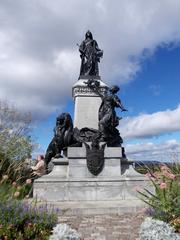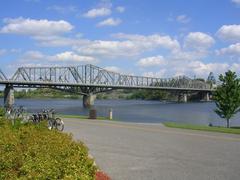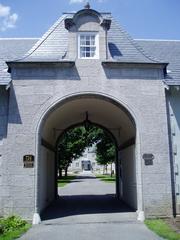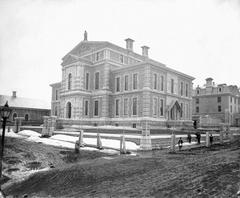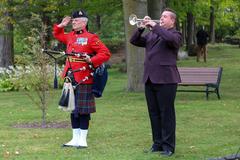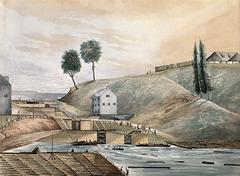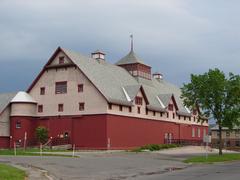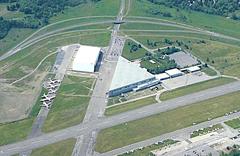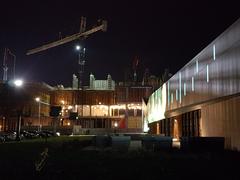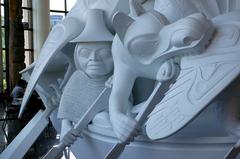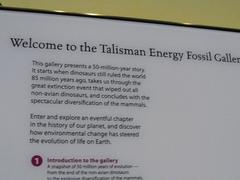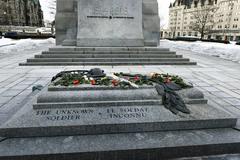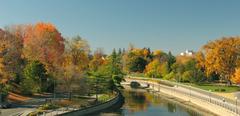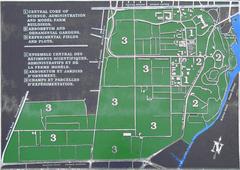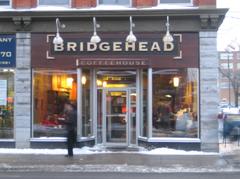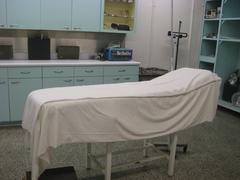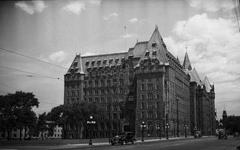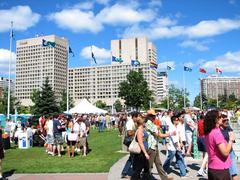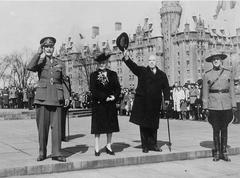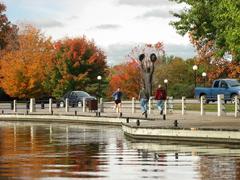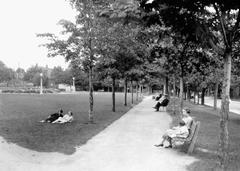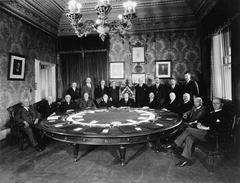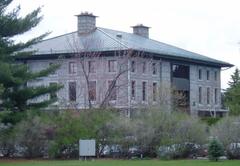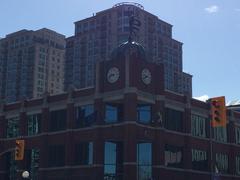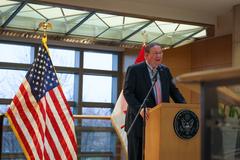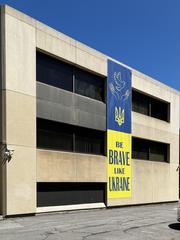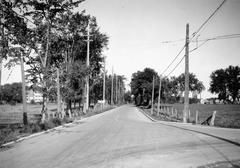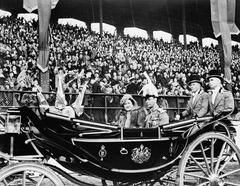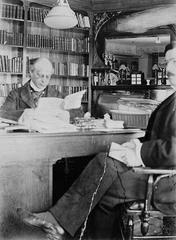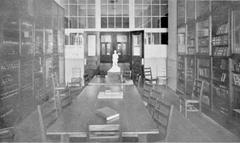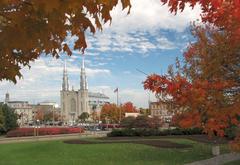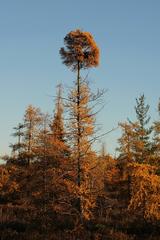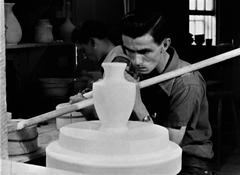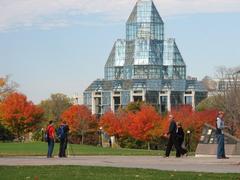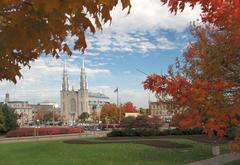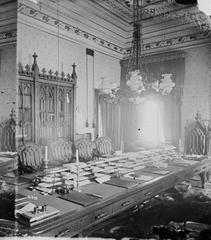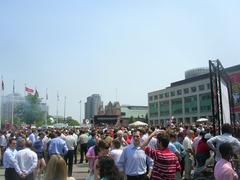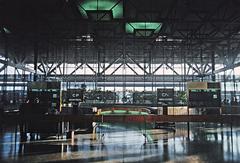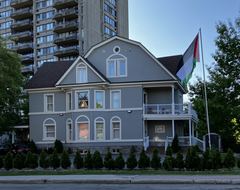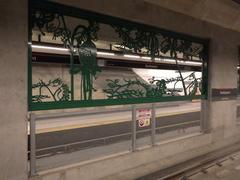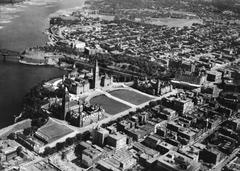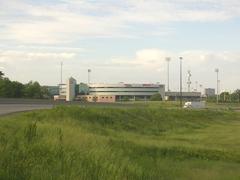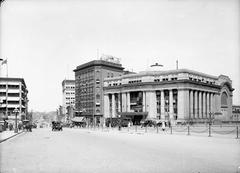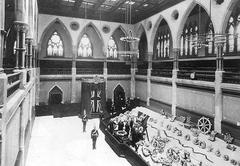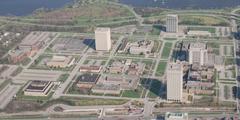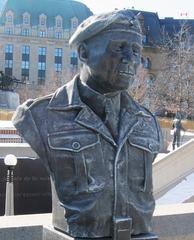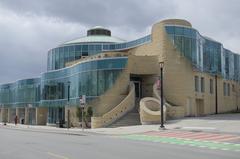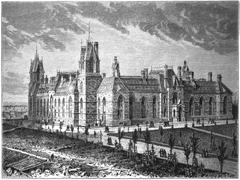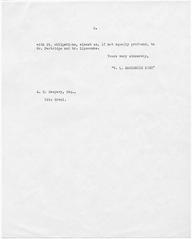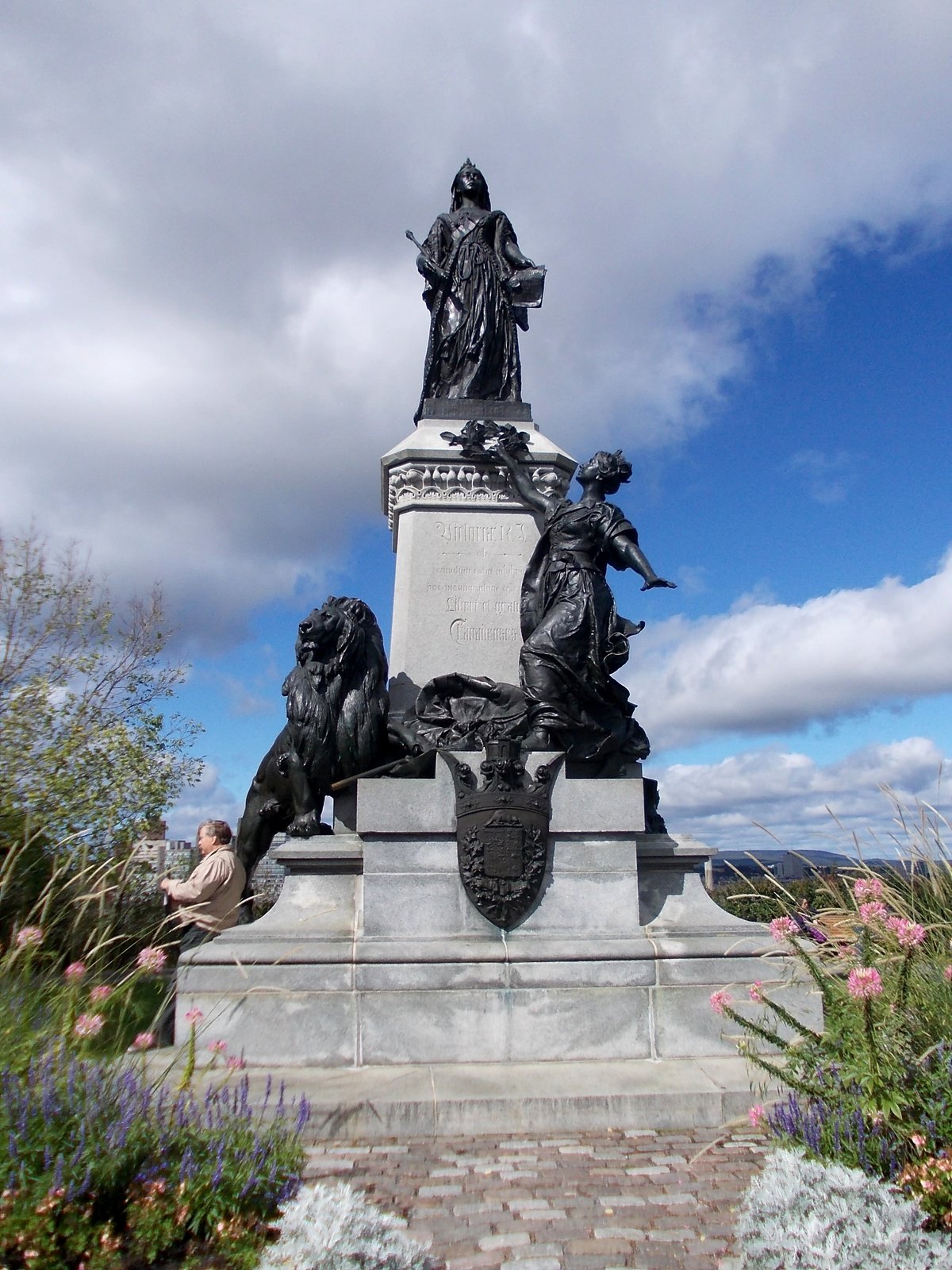
Statue of Queen Victoria Ottawa: Visiting Hours, Tickets, and Tourist Guide
Date: 14/06/2025
Introduction
The Statue of Queen Victoria in Ottawa is a cornerstone of Canada’s historical and cultural landscape. Erected to commemorate Queen Victoria’s pivotal influence on Canadian Confederation and the designation of Ottawa as the nation’s capital, this monument offers visitors a tangible link to the country’s colonial past and evolving identity within the British Empire. Perched prominently on Parliament Hill, the statue attracts tourists, history enthusiasts, and art lovers eager to explore Canada’s heritage, neoclassical artistry, and the enduring legacy of the constitutional monarchy.
This comprehensive guide provides essential details for planning a visit, including historical context, artistic significance, accessibility information, nearby attractions, and practical tips. For up-to-date details, consult official resources such as the Government of Canada Heritage Sites, Parliament of Canada, and Ottawa Tourism.
Historical Background
Origins and Commissioning
Shortly after Queen Victoria’s death in 1901, the Canadian government commissioned the statue as part of a broader tradition of imperial monuments across the British Empire. Ottawa, as the newly designated capital, was chosen to honor the monarch who presided over Confederation in 1867 and helped shape modern Canada. The statue’s commissioning symbolized loyalty to the Crown and celebrated Canada’s status as a self-governing dominion (Government of Canada Heritage Sites).
Artistic Design and Symbolism
The outdoor Parliament Hill statue, crafted by Louis-Philippe Hébert, depicts Queen Victoria seated, adorned in regal robes and holding the orb and scepter—emblems of monarchical authority. Hébert’s approach combines realism with allegory, portraying Victoria as both sovereign and maternal figure. The statue’s base features elaborate carvings and inscriptions, including the years of Victoria’s reign (1837–1901), grounding the monument in its historical context.
Indoors, within the Library of Parliament, another prominent statue by Marshall Wood presents a neoclassical, idealized image of Victoria in Roman attire. This artistic choice reflects 19th-century traditions of linking contemporary figures to the virtues and grandeur of antiquity (Parliament of Canada).
Unveiling and Early Reception
The outdoor statue was unveiled in September 1901 during a major public ceremony attended by dignitaries, including the Duke and Duchess of Cornwall and York (later King George V and Queen Mary). The event honored soldiers returning from the Boer War, intertwining the statue’s symbolism with both imperial and national narratives (Yale Center for British Art). The statue quickly became central to royal celebrations and commemorations, especially Victoria Day.
Queen Victoria and Canadian Confederation
Queen Victoria’s reign (1837–1901) encompassed transformative milestones for Canada, most notably the passage of the British North America Act in 1867, which established the Dominion of Canada. Her choice of Ottawa as the capital further cemented her influence on the nation’s political identity (Library and Archives Canada). The statue stands as a tribute to her role in shaping Canada’s parliamentary system.
Evolving Significance
Initially lauded as a symbol of imperial loyalty, the statue’s meaning has evolved. Today, it serves as a focal point for reflection amid national conversations about colonialism, reconciliation with Indigenous peoples, and the legacy of the monarchy (Canadian Museum of History). Preservation efforts by the National Capital Commission ensure the monument’s longevity and continued relevance.
Visiting Information
Visiting Hours and Admission
- Statue Location: Outdoors on Parliament Hill, Ottawa, Ontario
- Hours: Accessible year-round, typically from dawn to dusk. Some special events or security situations may limit access.
- Admission: Free; no tickets required to view the statue or Parliament Hill grounds.
Consult the National Capital Commission website for real-time updates.
Accessibility
Parliament Hill features paved, wheelchair-accessible paths to the statue and other monuments. The Visitor Welcome Centre at the base of the Hill provides accessible washrooms and assistance for visitors with disabilities.
Guided Tours and Interpretive Resources
- Guided Tours: Offered seasonally in English and French, often including detailed context on the statue and Canadian parliamentary history. Advance booking is recommended, especially during peak periods (Ottawa Tourism).
- Interpretive Plaques: On-site plaques provide historical details and context.
- Virtual Tours: Available via official platforms for remote or self-guided exploration.
Nearby Attractions
Combine your visit to the Queen Victoria statue with other Parliament Hill highlights:
- Peace Tower: Iconic clock tower, offering panoramic views.
- Centennial Flame: Symbol of Canadian unity.
- Canadian Museum of History: Across the Ottawa River.
- ByWard Market: Historic district for dining and shopping.
- Other Monuments: Sir John A. Macdonald, Alexander Mackenzie, and more (Canada.ca).
Artistic and Symbolic Significance
Marshall Wood’s Library Statue
Within the Library of Parliament, Marshall Wood’s marble statue (1871) captures Queen Victoria as a youthful, idealized monarch in classical Roman dress. She holds the Regal Circlet, a scepter (symbolizing sovereign authority), and a laurel wreath (emblematic of victory and achievement). This neoclassical style was intended to evoke timeless dignity and virtue (Parliament of Canada).
Restoration and Craftsmanship
The Library statue underwent major restoration from 2002–2005:
- Cleaning: Removal of soot and restoration of marble’s original luster.
- Structural Stabilization: Seismic upgrades and reinforcement.
- Conservation Choices: Preservation of original materials and evidence of historical gilding.
Both statues—outdoor and Library—feature masterful craftsmanship, intricate detailing, and a monumental presence, underscoring their importance in Canada’s art and public memory.
Placement and Influence
The central placement of the Library statue and the prominent outdoor siting on Parliament Hill visually reinforce Queen Victoria’s central role in Canadian history and parliamentary tradition. Replicas and adaptations of these designs appeared across the former British Empire, further cementing their artistic legacy (Parliament of Canada).
Visitor Guide: Planning Your Visit
Directions and Transportation
- On Foot: Easily accessible from downtown Ottawa.
- Public Transit: OC Transpo buses and O-Train Confederation Line stop nearby.
- Parking: Limited near Parliament Hill; public transit or walking is recommended due to security and demand.
Best Times to Visit
- Spring/Summer: Lush gardens and frequent public events, such as Changing of the Guard and Canada Day celebrations (TodoCanada). Note larger crowds.
- Fall: Quieter, with beautiful autumn foliage.
- Winter: Open, but snow and ice may affect accessibility; the statue and grounds are picturesque in winter light.
Events and Special Occasions
- Victoria Day (May): Celebrations honoring Queen Victoria’s birthday.
- Canada Day (July 1): Major national festivities with the statue as a gathering point.
- Guided Heritage Tours: In-depth seasonal tours with historical interpretation.
Accessibility & Facilities
- Wheelchair and Mobility Access: Paved paths, ramps, and accessible washrooms.
- Visitor Assistance: Contact the Welcome Centre in advance for special needs.
- Rest Areas: Benches and shaded spots are available.
Photography and Media
The statue’s striking design and Parliament Hill backdrop make it a favorite for photography, especially at sunrise, sunset, or during ceremonies. High-quality images and virtual tours are available on official tourism and government websites.
Preservation and Recent Developments
Ongoing restoration and maintenance ensure the statue’s preservation. Temporary relocations or restricted access may occur during large-scale renovations on Parliament Hill (Canada.ca). Regular cleaning, conservation, and public engagement efforts help sustain the monument’s relevance and condition.
Frequently Asked Questions (FAQ)
Q: What are the visiting hours for the Queen Victoria statue?
A: The Parliament Hill grounds, including the statue, are open daily from dawn to dusk, year-round. Some areas may be restricted during events or renovations.
Q: Is admission or a ticket required?
A: No. Visiting the statue and grounds is free. Guided tours may require advance reservation.
Q: Are guided tours available?
A: Yes. Seasonal tours are offered in both English and French. Check Ottawa Tourism or the Parliament website for schedules.
Q: Is the site accessible for wheelchairs and strollers?
A: Yes. Paved walkways and ramps ensure accessibility; assistance is available upon request.
Q: Can I take photographs?
A: Yes. Photography is encouraged; early morning and late afternoon offer the best lighting.
Q: What is the best way to get there?
A: Public transit or walking from downtown are recommended due to limited parking.
Practical Tips for Visitors
- Dress for the weather: Ottawa’s climate can change rapidly.
- Use public transit or park downtown: Security and demand limit parking near Parliament Hill.
- Respect the monument: Do not climb or damage the statue.
- Pets: Dogs are allowed but must be leashed.
- Check for updates: Visit the official website before your trip for current information.
Why Explore the Statue of Queen Victoria?
The Statue of Queen Victoria stands at the crossroads of art, history, and national identity. Accessible year-round and free to the public, it invites Canadians and visitors alike to reflect on the nation’s colonial past, celebrate its parliamentary evolution, and appreciate the enduring artistry of its public monuments. Thoughtful preservation ensures the statue remains a living witness to Canada’s journey—an essential stop for anyone exploring Ottawa.
Take advantage of guided tours, informative plaques, and nearby attractions like the Peace Tower and Centennial Flame to enrich your understanding of Canada’s heritage. Enhance your visit with digital tools such as mobile apps and virtual tours, or plan around special events for a truly memorable experience.
Stay informed and connected: download the Audiala app, follow official tourism resources, and engage with Ottawa’s vibrant historical community online.
Sources and Further Reading
- Queen Victoria Statue Ottawa: Visiting Hours, History, and Tourist Guide, 2025, Government of Canada Heritage Sites (https://www.canada.ca/en/public-services-procurement/services/infrastructure-buildings/parliamentary-precinct/discover/statues.html)
- Artistic and Symbolic Significance, 2025, Parliament of Canada (https://lop.parl.ca/sites/PublicWebsite/default/en_CA/About/Spotlight/DecorativeArtsAndFinishes/Archives/StatueofQueenVictoria)
- Visiting the Statue of Queen Victoria on Parliament Hill: Hours, Tickets, and Historical Significance, 2025, Canada.ca (https://www.canada.ca/en/canadian-heritage/services/parliament-hill.html)
- Ottawa Tourism official site, 2025 (https://ottawatourism.ca)
- National Capital Commission, 2025 (https://ncc-ccn.gc.ca)
- Yale Center for British Art, 2025 (https://interactive.britishart.yale.edu/victoria-monuments/249/statue-of-queen-victoria)
- TodoCanada, 2025 (https://www.todocanada.ca/things-ottawa-june/)
